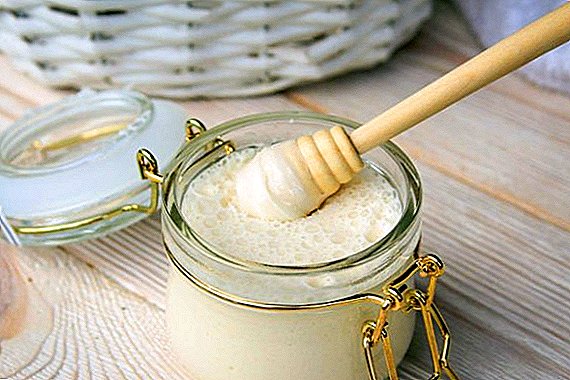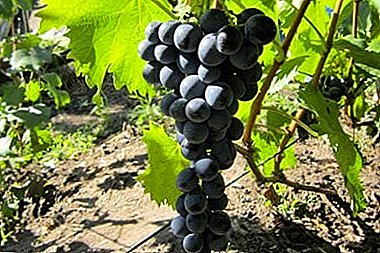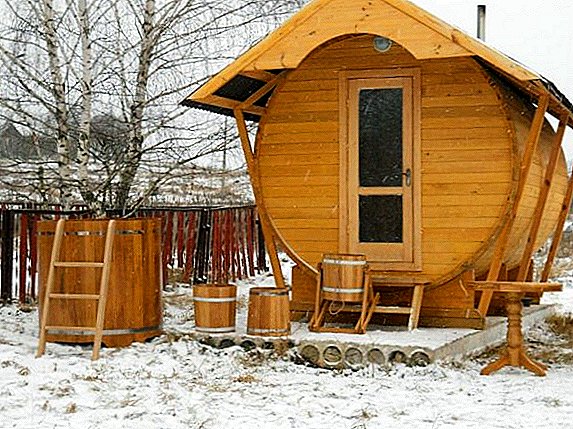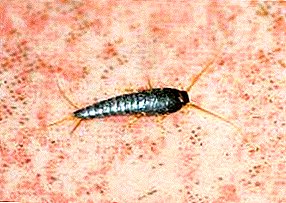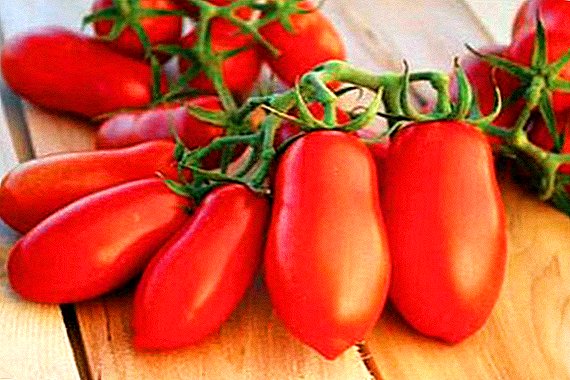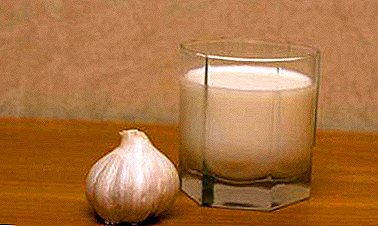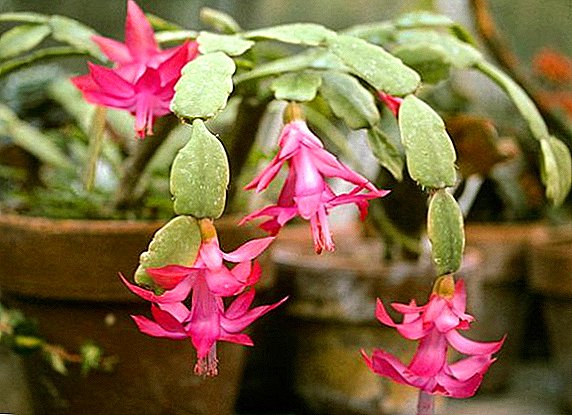
Ampel verbena is suitable for cultivation in home gardens and in pots on balconies. Its perennial species grow in the territory of South and Central America.
At home, planted annual hybrids. The popularity of a flower is due to its abundant flowering, a variety of color palette, endurance and drought resistance. The article will discuss in detail the cultivation of vervain from seeds and cuttings.
What is this plant?
The plant is thermophilic, does not tolerate cold, quickly dies in frosty weather. The length of the flower stems can reach 60 cm, grows well and by the flowering period one bush can occupy a space of up to 0.5 sq.m.
The main characteristics of vervain are:
 species diversity - more than 250 varieties are bred;
species diversity - more than 250 varieties are bred;- leaf color - light green, shape - round or oval, at the edges there are cloves, the leaf surface is covered with fibers;
- shades of flowers can vary from white to red and blue;
- each flower has 5 petals;
- flowers are collected in large inflorescences;
- a long flowering period, starting in July and ending in October.
Ampel verbena after flowering fruits nuts with seeds, the color of the shell may be green or light brown.
How to breed?
For verbena, it is common to use three breeding methods.:
- Cuttings.
- The division of the bushes.
- Seeding seeds.
Cutting is the most optimal way of breeding plant varieties that do not form seeds. Thanks to this method, flowering begins earlier than usual, its duration is longer than with the seed method of planting.
TIP: The option of dividing the bush is suitable for medicinal verbena. With a knife the bush and its root part is cut into several parts, the damaged areas are processed with crushed coal.
The method with the germination of seedlings from seeds - the most common. It is also used for hybrid varieties that are impossible to produce at home.
Growing Verbena Seed
Seeds are germinated under film or glass. Capacity with the soil is better to put in a well-lit place. The first months the plant will need mineral supplements with nitrogen fertilizers. When planting the obtained seedlings between the bushes, a distance of at least 30 cm should be left. It is recommended to transfer to the open ground in late May or early June.
Verbena resistant to most diseases and pests.. Its main enemy is aphid.
Watch a video about growing verbena from seeds:
Conditions for ripening
 Verbena produces seeds after flowering. It is easy to calculate the moment of ripening of the seed material - the fruits that have appeared (the nuts) change their color to brown and begin to dry out. At this time, they can be cut and laid out on a sheet of paper or a piece of cloth to dry. Bolls must be periodically turned over, otherwise they appear pockets of mold.
Verbena produces seeds after flowering. It is easy to calculate the moment of ripening of the seed material - the fruits that have appeared (the nuts) change their color to brown and begin to dry out. At this time, they can be cut and laid out on a sheet of paper or a piece of cloth to dry. Bolls must be periodically turned over, otherwise they appear pockets of mold.
The peculiarity of harvesting verbena seeds is that at home it is impossible to preserve the entire set of properties of the parent bushes. If the packaging with the original seed was marked F1, then these types of self-withdrawal will not work.
Appearance
Verbena seeds are oblong. Their color is from green to light brown. Outwardly, they look like small pieces of thin sticks.
In individual plant varieties, the seeds may be under a thick shell. This feature affects the rate of germination - wait for the emergence of the first shoots will have longer than usual.
A photo
Below you will see what the plant looks like in the photo.



Collection
When the fruit is dried, the seeds are considered ripe.. At this point, the boxes are neatly divided into 4 parts, the seeds of them are poured into a paper envelope. These sachets should be stored in a dry and warm place. It is possible to use for cultivation of seedling in the first spring.
Home care
Verbena seed germination is low in January and February; March is considered the optimal period for sowing. 5 days before planting, the seeds must undergo a stratification procedure - they are wrapped in a moist tissue cut, which is placed in a plastic bag.
The package is placed in the vegetable department of the refrigerator. Gradually, the process of planting and growing verbena from seeds occurs as follows.:
- Preparation of boxes with soil - drainage is laid out on the bottom, pre-heated soil mixture is poured on top, the soil is slightly moistened.
IMPORTANT: The soil for germinating seeds of vervain should be light, loose, have a high permeability and neutral acidity.
- Seeds are sown, they are usually not covered with earth from above, but the formation of a thin top layer of humus or earth soil is allowed. Seed material is wetted with a spray.
- The box or the pot with the future seedlings is covered with a film or other transparent and hermetic material (glass jar, plastic lid).
- Tanks with planted seeds are placed in a warm place, the temperature in the range from 18 to 22 degrees is constantly maintained in this room.
- Condensate that forms on the lid should be promptly removed by conducting airing for seedlings during such manipulations.
- After 20-30 days, the first shoots appear. At this stage, you will need a cooler and well-lit place. If necessary, it is allowed to lengthen the daylight for plants using fitolampy.
- The next step will be picking - it is made at the moment when the sprout has got two pairs of leaflets. Feeding is carried out with an interval of two weeks.
- After the formation of 4 pairs of leaves in ampel varieties, it is necessary to make a nip; for bush species, such a procedure is not required.
- When to plant? The end of May or the first half of June. Before planting, mineral fertilizers with nitrogen, phosphorus and potassium are added to the chosen place. Immediately after this, the plants are abundantly watered.
Further activities for the cultivation of vervains are reduced to regular weeding and watering. To increase the periods between irrigation, the top layer of soil should be mulched with peat.
Reproduction cuttings - detailed instructions
For grafting, the parent copy of the flower moves to the room for the winter period, maintaining the temperature at the level of 5-10 degrees. The procedure for planting cuttings begins in late February or in March. The process goes through such stages.:
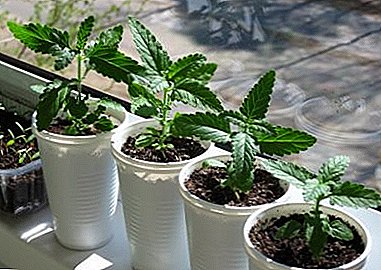 Preparation of soil mixture, which is based on peat with agro-perlite and sand.
Preparation of soil mixture, which is based on peat with agro-perlite and sand.- Warming up the soil and filling it with boxes for seedlings.
- Cuttings are cut - upper shoots with 4-6 leaflets are suitable for them. Under the lower pair of leaves on the handle, it is necessary to leave a stem 1 cm long. The lower leaflets are removed before planting the cutting.
- In the ground to make small grooves (for convenience, you can use a match or a toothpick).
- Sections of cuttings are dipped in the root, the stems are planted in prepared containers.
- Seedlings cover with plastic or glass jar, not forgetting to periodically ventilate.
- Cover with polyethylene / glass on top. Periodically airing.
Watch the video on breeding verbena cuttings:
Additional tips and warnings
When growing verbena, special attention should be paid to protecting it from powdery mildew, aphids, and rot. In most cases, the cause of the disease is regular waterlogging..
When the appearance of purple leaves should be limited to watering, remove all damaged parts of the plant. To control pests, it is advisable to use an insecticide.
TIP: To improve flowering, dry peduncles are cut off - cut to a quarter of the length of the shoot.
Perennial varieties of verbena can be stored in the open ground without transplanting. To this end, the plant is cut in the fall to ground level. From above, the flower is sprinkled with spruce branches, which will help to keep warm for the verbena root system.
Ampelnaya verbena - the perfect solution for decorating windows, balconies and garden plots. They look good on the alpine hills, please with a long flowering period. This plant is unpretentious and resistant to disease, but is sensitive to cold and sudden changes in temperature.


 species diversity - more than 250 varieties are bred;
species diversity - more than 250 varieties are bred; Preparation of soil mixture, which is based on peat with agro-perlite and sand.
Preparation of soil mixture, which is based on peat with agro-perlite and sand.